#josé miguel moreno
Explore tagged Tumblr posts
Text
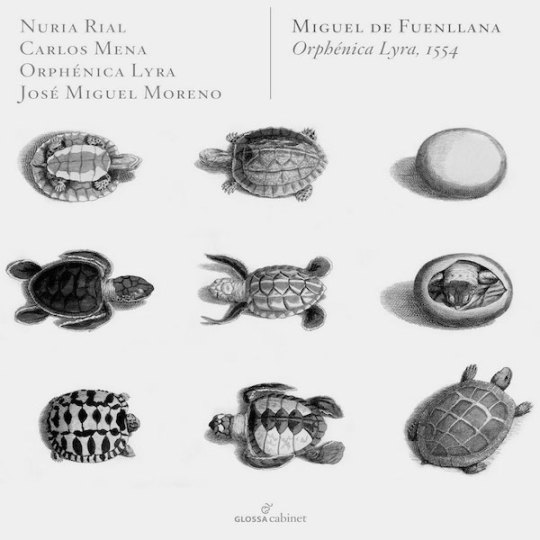
Currently Playing
Miguel de Fuenllana ORPHÉNICA LYRA, 1554
Núria Real Carlos Mena Orphénica Lyra José Miguel Moreno
Guido Balestracci Sergi Casademunt Fernando Paz Alba Fresno David Mayoral
#Carlos Mena#José Miguel Moreno#medieval and renaissance music#Miguel de Fuenllana#Núria Real#Orphénica Lyra#1554#playing
0 notes
Text

Don Quixote and the Windmills by José Moreno Carbonero
#don quixote#art#josé moreno carbonero#windmill#windmills#chivalry#chivalric romance#knight errant#knight#knights#spain#spanish#miguel de cervantes#medieval#middle ages#sancho panza#hidalgo#rocinante#don quijote#alonso quixano#alonso quijano#romanticism#lance#joust#horse#europe#european
204 notes
·
View notes
Text
Les résultats du Samedi 29 juin 2024 : Algeciras, Burgos, Soria, Mostoles
Algeciras, Samedi 29 juin 6 toros de Miura pourOctavio Chacon : une oreille et salut après avisEsau Fernandez : salut et vuelta après avisMiguel Angel Pacheco : silence après avis et salut après avis Burgos, Samedi 29 juin 6 toros de Antonio Bañuelos pourEl Fandi : une oreille et une oreilleManuel Escribano : salut et une oreilleIsmael Martin (alternative) : 2 oreilles et salut Soria, Samedi…

View On WordPress
#Adolfo Martin#Algeciras#Alternative#Antonio Bañuelos#Borja Jiménez#Burgos#Copa Chenel#Diego Urdiales#El Fandi#Esau Fernandez#Ismael Martin#José Fernando Molina#Julio de la Puerta#Luis David Adame#Manuel Escribano#Miguel Angel Pacheco#Miguel Angel Perera#Miura#Mostoles#Octavio Chacon#Soria#Victor Hernandez#Zacarias Moreno
0 notes
Text
En Málaga se graba

[La Orquesta Filarmónica de Málaga en la foto oficial para la temporada 2023-24 / OFM]
La Filarmónica de Málaga presenta casi a la vez la primera grabación mundial de las Sinfonías de Marqués y un álbum dedicado a Falla
Entre las cuatro orquestas institucionales andaluzas, la de Málaga ha sido siempre la que más interés ha mostrado por el mundo del disco. Sus álbumes publicados pasan de 60. Aunque los hay de todo tipo (algunos, meramente alimenticios), se cuentan entre ellos series de enorme interés, como los rescates de música española que la orquesta hizo junto al director José Luis Temes hace algo más de una década. Música de Emilio Lehmberg, Fernando Remacha, Arturo Dúo Vital, Evaristo Fernández Blanco o Manuel Manrique de Lara vieron la luz entonces en pulcras producciones del sello Verso. Desaparecida la marca madrileña en 2015, Temes empezó a publicar sus registros (que hacía con otras muchas orquestas españolas, incluida también la de Córdoba) en el sello Cezanne, que había fundado en 2001 Javier Monteverde. Ahí se publica ahora una caja de tres cedés con grabaciones del año 2010 que estaban inéditas y recogen la integral de las sinfonías de Pedro Miguel Marqués (Palma de Mallorca, 1843-1918).
Marqués se formó como violinista y compositor en su ciudad natal y en París, donde al parecer tuvo contactos con Berlioz, quien lo habría adiestrado en técnicas de orquestación. Regresado a España en 1865, pasa por el Conservatorio de Madrid, donde estudia con Jesús Monasterio y Emilio Arrieta. Desarrolla luego la mayor parte de su carrera como violinista y compositor en la capital española, escribiendo una cincuentena de obras teatrales (acaso sea la zarzuela El anillo de hierro, estrenada con gran éxito en 1878, la única partitura que hoy se mantiene, y muy marginalmente, en el repertorio) y música orquestal diversa, que tiene como culmen su ciclo sinfónico, cinco obras que editó Ramón Sobrino para el ICCMU entre 1993 y 2003. En noviembre de 2005, dentro del Festival de Música Española de Cádiz, la Sinfónica de Sevilla, dirigida por José de Eusebio, presentó la 4ª sinfonía en la que es la primera interpretación moderna de una de estas partituras que he podido documentar, pero lo cierto es que las obras no entraron entonces en repertorio. La publicación de este registro les concede una nueva oportunidad, aunque no lo van a tener fácil, ni por sus propias debilidades ni por el muro de prejuicios y habitual falta de riesgo programador de los conjuntos españoles.

Escritas entre 1869 y 1880 (aunque de las dos últimas Marqués hizo nuevas versiones en los años 90, que son la grabadas aquí), las Sinfonías del compositor balear responden al esquema clásico en cuatro movimientos (allegro de sonata, tiempo lento, scherzo y final) y bebe de modelos también clásicos, que arrancan inevitablemente de Beethoven y se apoyan sobre todo en Mendelssohn, aunque incluye abundantes elementos rossinianos (sobre todo en las dos primeras), rastros de música militar y toques de cierto color localista. Todas las obras fueron estrenadas en el madrileño Teatro Príncipe Alfonso con resonantes acogidas que al parecer fue especialmente intensa el día de la presentación de la 3ª (2 de abril de 1876) por la presencia en el teatro del joven Alfonso XII, que acabó convirtiendo el estreno casi en acontecimiento nacional. Esta 3ª (escrita como la 5ª en modo menor; las otras tres están en mayor) es posiblemente la obra más sólida de la serie: contiene un intenso Andante con moto muy mendelssohniano y un original Allegretto gracioso escrito en forma de tema con variaciones y con una parte obligada para el violín. La 4ª incorpora la antigua introducción lenta de las sinfonías clásicas e incluye un Andante apocalíptico de resonancias operísticas.
Coincide la publicación de este registro con la titularidad de un maestro mallorquín al frente de la orquesta malagueña, José María Moreno Valiente, que parece decidido a mantener la tradición fonográfica del conjunto. Si para el 30 aniversario de la orquesta, se permitió el lujo de registrar una 5ª de Mahler, ahora, también como entonces en el sello granadino IBS Classical, ha afrontado un interesante proyecto Falla, en el que se recogen dos versiones de una misma obra.
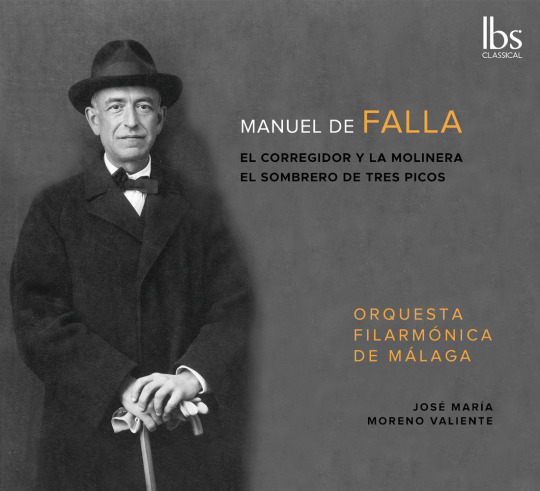
El corregidor y la molinera nació como farsa mímica en un acto y dos cuadros en 1916 y se estrenó en el Teatro Eslava de Madrid el 6 de abril de 1917. La obra contaba con libreto de María Lejárraga, escrito a partir de El sombrero de tres picos, la novelita de Pedro Antonio de Alarcón, que a su vez se basaba en un antiguo romance popular, El molinero de Arcos. Coincidió la concepción y el estreno de la obra con la presencia en Madrid de Serguéi Diáguilev que se había refugiado con sus Ballets rusos en España huyendo de la guerra europea. El gran productor ruso no consiguió que Falla diera su brazo a torcer para convertir sus Noches en los Jardines de España en un ballet para su compañ��a, pero al parecer el gaditano le sugirió que sí estaría dispuesto a hacerlo con esta pantomima que en aquel momento estaba escribiendo. Y así fue como El corregidor y la molinera pasó a ser El sombrero de tres picos, el ballet que la compañía de Diáguilev estrenó en el Teatro Alhambra de Londres el 22 de julio de 1919. La presentación de la obra contó con coreografía de Léonid Massine y decorados y vestuario de Picasso. Dirigió la orquesta Ernest Ansermet. En su transformación en ballet, Falla no sólo pasó del formato casi camerístico original (17 músicos) a la gran orquesta, sino que cambió la concepción narrativa, lineal, de la pantomima de partida, articulando la obra en torno a las danzas que representan a cada uno de los protagonistas y desarrollando especialmente su parte final, sobre todo esa gran jota conclusiva que se cuenta entre los mayores logros orquestales de la etapa nacionalista del maestro gaditano. El éxito en Londres fue apoteósico, pero Falla no pudo disfrutar de él in situ. Un día antes había recibido un telegrama que lo alertaba del gravísimo estado de salud de su madre, y volvió enseguida a Madrid para encontrarla ya muerta.
El registro de estas dos obras por la Filarmónica malagueña, hecho con un año de diferencia (febrero de 2022 - enero de 2023), pone en perspectiva la capacidad del genio de Falla para adaptarse a su entorno: lo mismo en un intento de reeditar ampliado el éxito de El amor brujo con una obra camerística para el mercado local que ante la llamada del gran espectáculo internacional, su talento termina imponiéndose desde el rigor, la técnica y la fantasía.
[Diario de Sevilla. 3-09-2023]
LAS SINFONÍAS DE MARQUÉS EN SPOTIFY
EL ÁLBUM FALLA EN SPOTIFY
#pfm#orquesta filarmónica de málaga#josé maría moreno valiente#josé luis temes#cezanne#miguel marqués#ibs classical#manuel de falla#música#music
1 note
·
View note
Text
Abascal apuesta por la ‘gran coalición de españoles honrados’ frente al peor Gobierno y quienes sólo esperan a heredar
Abascal apuesta por la ‘gran coalición de españoles honrados’ frente al peor Gobierno y quienes sólo esperan a heredar El presidente de VOX, Santiago Abascal, ha ofrecido a los miles de personas que llenaban la plaza de toros de Murcia el proyecto de su partido para estas elecciones: “En VOX vamos a recoger todo esos consensos de los hombres y mujeres tranquilos, que quieren vivir en paz. Vamos…
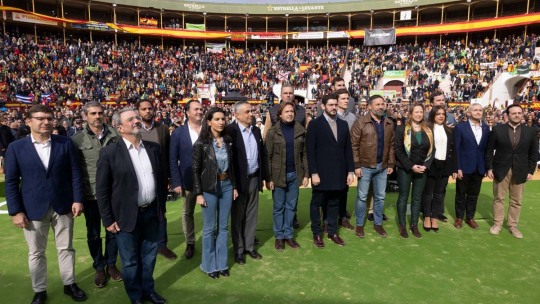
View On WordPress
#EmpezandoPorLoQueImporta#Alejandro Nolasco#Ángel Alda#Ángel Pelayo#Carlos Flores#Carolina López#David Moreno#Ignacio Garriga#Jorge Campos#José Antonio Ortega Lara#José Ángel Antelo#José Miguel Tasende#Juan Sergio Redondo#Leticia Díaz#Nicasio Galván#Rocío Monasterio#Santiago Abascal#VOX España
0 notes
Text
Exposición “Vértigo (otra historia de apariencias)”, Colectiva
Exposición Vértigo (otra historia de apariencias) Colectiva 29.12.2022 Galería Taller Gorría Un fieltro/alfombra da la bienvenida al espectador a esta muestra. A nadie asombra que sea “Auto de fe” – pieza de 2020 de Aldo Soler (hijo) – con la frase “La Generación de la Esperanza Cierta”, una alusión directa al término acuñado por Juan Marinello desde sus Palabras en una exposición de plástica…

View On WordPress
#2022#Aldo Soler#Alejandro Cañer#Alejandro Munilla#Alejandro Vega Baró#Amanda Rodríguez Leyva#Ariel Santos#Bárbaro Guerra#Fernando Fernández Tito#Galería Taller Gorría#Harold Ramírez#Jany Batista#Jhonatan Moreno#José Miguel Cano#Juan José Ricardo (Jota)#Kevin Sánchez#Leandro Quintana#María Fernánda Chacón#Muestra Colectiva#Odalys Orozco#Olivia Torres#Omar Anthony Rodríguez#Rolando Galindo
0 notes
Text
youtube
Mauro Giuliani (1781-1829) - Amor, perché m'accendi ·
Marta Almajano,vocals & José Miguel Moreno, guitar
3 notes
·
View notes
Text
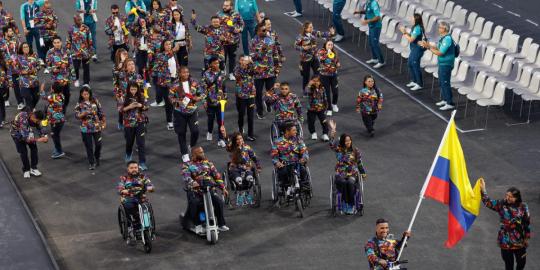
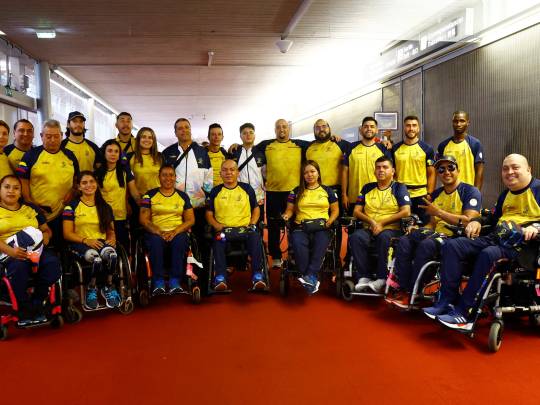
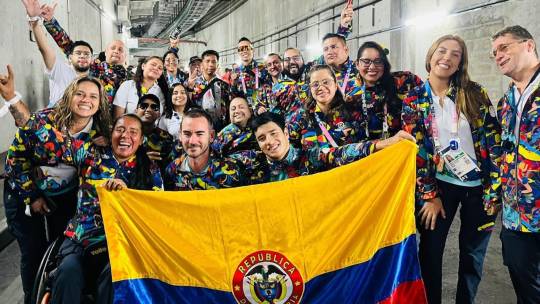
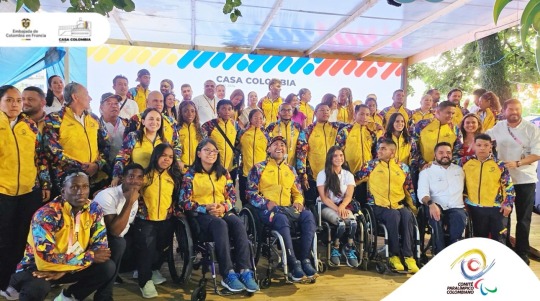
A bit late but couldn't forget about them, our Paralympics delegation. They absolutely killed it. Every single one of them giving it all and making us proud.
Thank you to all of our 78 participants, 28 medalists, and 44 diplomas.
Alex Enrique Martínez Guevara, Ana Lucía Pinto Ochoa, Andrés Felipe Mosquera Neira, Angie Lizeth Pabón Mamian, Aura Cristina Poblador Granados, Bertha Cecilia Fernández Arango, Brayan Mauricio Triana Herrera, Buinder Brainer Bermúdez Villar, Carlos Andrés Vargas Villanueva, Carlos Daniel Serrano Zárate, Daniel Giraldo Correa, Daniela Carolina Munévar Flórez, Darian Faisury Jiménez Sánchez, David Felipe Rendón Acosta, Diego Fernando Meneses Medina, Edilson Chica Chica, Edwin Fabián Matiz Ruiz, Eglain Antonio Mena Lemus, Erica María Castaño Salazar, Euclides Grisales Diaz, Fabio Torres Silva, Francy Esther Osorio Calderón, Fredy Duvian López Morales, Gabriela Oviedo Rueda, Giovanny Andrés Malambo Rachez, Gisell Natalia Prada Pachón, Héctor Julio Ramírez Murcia, Ionis Dayana salcedo rodríguez, Jesús Alberto López, Jesús Augusto Romero Montoya, Jhohan Darío Ardila Cárdenas, Jhon Alexander Hernández García, Jhon Eider González Hernández, Jhon Fredy Gómez Giraldo, Jhon Sebastián Obando Asprilla, José Gregorio Lemos Rivas, Juan Alejandro Campas Sánchez, Juan David Pérez Quintero, Juan Esteban García Sánchez, Juan Esteban Patiño Giraldo, Juan José Betancourt Quiroga, Julián Andrés Jaramillo Téllez, Karen Tatiana Palomeque Moreno, Kevin Alfonso Moreno Gualaco, Laura Carolina González Rodríguez, Leider Albeiro Lemus Rojas, Leidy Johanna Chica Chica, Lino Nicolás Coca Castro, Luis dahir Arizala Ocoró, Luis Fernando Lara Rodallega, Luis Fernando Lucumí Villegas, Luis Francisco Sanclemente, María Alejandra Murillo Benítez, María Angélica Bernal Villalobos, María Mónica Daza Guzmán, María Paula Barrera Zapata, María Salomé Henao Sánchez, María Teresa Restrepo Rojas, Mariana Guerrero Martínez, Mauricio Andrés Valencia Campo, Mayerli Buitrago Ariza, Miguel Ángel Rincón Narváez, Nelson Crispín Corzo, Niver Rangel palmera, Paula Andrea Ossa Veloza, Reynel Romero Montoya, Santiago Solis Torres, Sara del Pilar Vargas Blanco, William Jair higuera Ocampo, Xiomara Saldarriaga Hernández, Yamil David Acosta Manjarrez, Yasiris Blandón Escobar, Yeferson Suárez Cardona, Yeniffer Paredes Muriel, Yesenia María Restrepo Muñoz, Yesica Paola Muñoz Nieto, Zharith Alejandra Rodríguez Silva, Zuleiny Rodríguez Trujillo
#paralympics 2024#colombia#comité paralímpico colombiano#colombian paralympic committee#(nightmade)#this was my first time actually watching the paralympics games#it was amazing#I'm saddened that they don't get as much noise as the other games#like we won 9 times more medals and yet the news nothing
3 notes
·
View notes
Text
PT.2
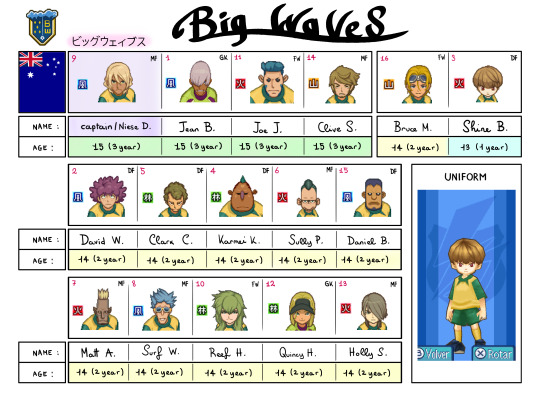
1) Jean Baker: "Australia's strongest goalkeeper. He is the true Poseidon."
2) David Waterman: "Originally an Aussie rules player but was longing to participate in the tournament."
3) Shine Beach: "He cannot stand it when a sandy beach is dirty and picks up garbage every day."
4) Karmei Kohler: "He keeps art handed down from ancient times in Australia as a tradition."
5) Clark Cain: "Eager to protect the rare creatures that live in Australia."
6) Sully Princeton: "A genius at finding the whereabouts of rare minerals. He seems to know by just looking at the terrain."
7) Matt Angle: "Patience strengthened by spiritual discipline is the key to this player's power."
8) Surf Wyndhas: "A worldwide master at surfing. He waits for good waves to always look at the sea."
9) Niese Dolphin: "The brilliant prince of the sea. He is the man to lead Australia."
10) Reef Hamilton: "He is a master at catching tropical fish in coral reefs by skindiving."
11) Joe Jones: "Attacks at once when it comes to opportunities to quietly creep up on the opponent."
12) Quincy Horst: "He travels the wilderness still looking for a new gold mine."
13) Holly Summers: "Although he has a part-time job as Santa every year he envies the cold areas."
14) Clive Scissors: "He is good at cutting through opponents with the use of his sharp arm."
15) Daniel Barrack: "He is working hard to be the best in the world of horse meat that has been kept at his home in Australia."
16) Bruce Marlin: "Does his footwork with a spring characteristic of a kangaroo."
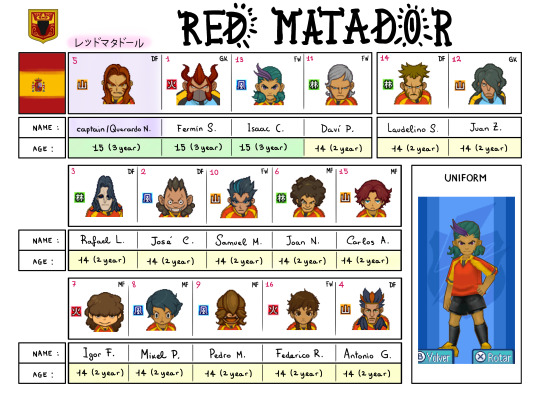
1) Fermin Sanchez: "Like a bull at a matador, he charges straight through the crowd to grab the ball."
2) José Costa: "He's an experienced and tenacious mountain biker."
3) Rafael López: "He's a great flamenco dancer. Girls are lining up for a chance to dance with him."
4) Antonio Galius: "He's always making sketches for abstract paintings, like Picasso."
5) Querardo Naval: "He's trained to be a matador since he was a child, but he hates hurting animals."
6) Joan Nadal: "He eats five meals a day to keep his strength up when he's travelling overseas."
7) Igor Freire: "He's an avid consumer of paella, but he's really fussy about the type of rice."
8) Mikel Pereiro: "His hobby is making sailing boats. He's assembling an invincible armada in his bathtub."
9) Pedro Moreno: "He's raising a black Iberian pig at home, in the hope of producing tasty ham."
10) Samuel Mayo: "This plucky Pamplonica dreams of one day showing his mettle at the Running of the Bulls."
11) Davi Peroqui: "He's fiercely proud of Spanish football, and doesn't hide his desire to take on the world."
12) Juan Zubeldia: "Everyone is bewitched by his virtuosic skill at flamenco guitar."
13) Isaac César: "An opportunist on and off the field. If he sees a beautiful girl, he'll try to charm her."
14) Laudelino Sastre: "Like Don Quixote, he acts rashly without considering consequences."
15) Carlos Arroyo: "He hopes to raise architectural wonders like the Sagrada Familia."
16) Federico Rubiera: "He'd like to have a go at synchronised swimming, but he can't find a boys' team."
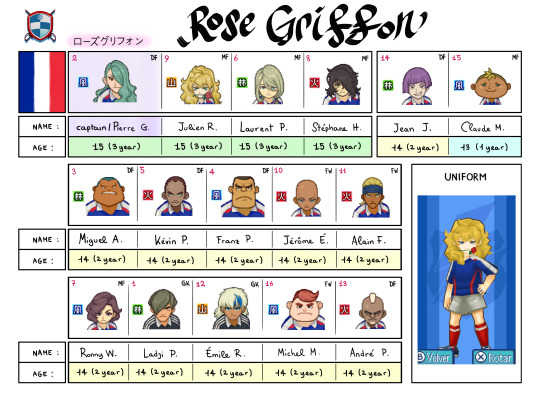
1) Ladji Paara: "Always draws pictures in Montmartre. He wants to be called the pioneer of soccer pictures."
2) Pierre Godin: "His motto is: always play with style and grace, no matter who your rival is."
3) Miguel Arron: "Despite his appearance, this boy has a gift for French cuisine."
4) Franz Poujol: "He wants to make a building more famous than the Eiffel Tower and the Arc de Triomphe in Paris someday!"
5) Kévin Pinot: "He wants to apply Napoleonic battle strategies on the playing field."
6) Laurent Pérec: "He always spends his days off relaxing at outdoor cafés."
7) Ronny Weiss: "As one of France's best boy models, he is in high demand for fashion shows and photogravures."
8) Stéphane Henno: "A young genius artist of chansons. All of his CDs are big hits!"
9) Julien Rousseau: "He likes to play with a rose clamped between his teeth. Very pretentious."
10) Jérôme Éloi: "Due to having a keen sense of smell, this person is capable of blending the best perfume."
11) Alain Failliot: "The son of a bicycle repairman. He'd like to help out at the Tour de France one day."
12) Émile Razzano: "He considers himself a devotee of French cinema and has a large collection of DVD movies."
13) André Panzo: "He likes nineteenth-century philosophy, but his friends do not understand him when he explains it."
14) Jean Jetin: "Although he has not yet made the leap to fame, this guy is a fashion prodigy."
15) Claude Moreau: "His baguettes are known throughout France. Mmm … They are delicious!"
16) Michel Morin: "He has a gift for gardening, especially if it's about cultivating life."
11 notes
·
View notes
Text
Generation of 27
The Generation of '27 (Spanish: Generación del 27) was an influential group of poets that arose in Spanish literary circles between 1923 and 1927, essentially out of a shared desire to experience and work with avant-garde forms of art and poetry. Their first formal meeting took place in Seville in 1927 to mark the 300th anniversary of the death of the baroque poet Luis de Góngora. Writers and intellectuals paid homage at the Ateneo de Sevilla, which retrospectively became the foundational act of the movement.
Terminology:
The Generation of '27 has also been called, with lesser success, "Generation of the Dictatorship", "Generation of the Republic", "Generation Guillén-Lorca" (Guillén being its oldest author and Lorca its youngest), "Generation of 1925" (average publishing date of the first book of each author), "Generation of Avant-Gardes", "Generation of Friendship", etc. According to Petersen, "generation group" or a "constellation" are better terms which are not so much historically restricted as "generation".
Aesthetic style:
The Generation of '27 cannot be neatly categorized stylistically because of the wide variety of genres and styles cultivated by its members. Some members, such as Jorge Guillén, wrote in a style that has been loosely called jubilant and joyous and celebrated the instant, others, such as Rafael Alberti, underwent a poetic evolution that led him from youthful poetry of a more romantic vein to later politically-engaged verses.
The group tried to bridge the gap between Spanish popular culture and folklore, classical literary tradition and European avant-gardes. It evolved from pure poetry, which emphasized music in poetry, in the vein of Baudelaire, to Futurism, Cubism, Ultraistand Creationism, to become influenced by Surrealism and finally to disperse in interior and exterior exile following the Civil Warand World War II, which are sometimes gathered by historians under the term of the "European Civil War". The Generation of '27 made a frequent use of visionary images, free verses and the so-called impure poetry, supported by Pablo Neruda.
Members:
In a restrictive sense, the Generation of '27 refers to ten authors, Jorge Guillén, Pedro Salinas, Rafael Alberti, Federico García Lorca, Dámaso Alonso, Gerardo Diego, Luis Cernuda, Vicente Aleixandre, Manuel Altolaguirre and Emilio Prados. However, many others were in their orbit, some older authors such as Fernando Villalón, José Moreno Villa or León Felipe, and other younger authors such as Miguel Hernández. Others have been forgotten by the critics, such as Juan Larrea, Pepe Alameda, Mauricio Bacarisse, Juan José Domenchina, José María Hinojosa, José Bergamín or Juan Gil-Albert. There is also the "Other generation of '27", a term coined by José López Rubio, formed by himself and humorist disciples of Ramón Gómez de la Serna, including: Enrique Jardiel Poncela, Edgar Neville, Miguel Mihura and Antonio de Lara, "Tono", writers who would integrate after the Civil War (1936–39) the editing board of La Codorniz.
Furthermore, the Generation of '27, as clearly reflected in the literary press of the period, was not exclusively restricted to poets, including artists such as Luis Buñuel, the caricaturist K-Hito, the surrealist painters Salvador Dalí and Óscar Domínguez, the painter and sculptor Maruja Mallo, as well as Benjamín Palencia, Gregorio Prieto, Manuel Ángeles Ortiz and Gabriel García Maroto, the toreros Ignacio Sánchez Mejías and Jesús Bal y Gay, musicologists and composers belonging to the Group of Eight, including Bal y Gay, Ernesto Halffter and his brother Rodolfo Halffter, Juan José Mantecón, Julián Bautista, Fernando Remacha, Rosa García Ascot, Salvador Bacarisse and Gustavo Pittaluga. There was also the Catalan Group who presented themselves in 1931 under the name of Grupo de Artistas Catalanes Independientes, including Roberto Gerhard, Baltasar Samper, Manuel Blancafort, Ricard Lamote de Grignon, Eduardo Toldrá and Federico Mompou.
Finally, not all literary works were written in Spanish: Salvador Dalí and Óscar Domínguez also wrote in French. Foreigners such as the Chilean poets Pablo Neruda and Vicente Huidobro, the Argentine writer Jorge Luis Borges, and the Franco-Spanish painter Francis Picabia also shared much with the aesthetics of the Generation of '27.
The Generation of '27 was not exclusively located in Madrid, but rather deployed itself in a geographical constellation which maintained links together. The most important nuclei were in Sevilla, around the Mediodía review, Tenerife around the Gaceta de Arte, and Málaga around the Litoral review. Others members resided in Galicia, Catalonia and Valladolid.
The Tendencies of '27:
The name "Generation of 1927" identifies poets that emerged around 1927, the 300th anniversary of the death of the Baroque poet Luis de Góngora y Argote to whom the poets paid homage. It sparked a brief flash of neo-Gongorism by outstanding poets like Rafael Alberti, Vicente Aleixandre, Dámaso Alonso, Luis Cernuda, Gerardo Diego and Federico García Lorca.
Spanish Civil War aftermath:
The Spanish Civil War ended the movement: García Lorca was murdered, Miguel Hernandez died in jail and other writers (Rafael Alberti, Jose Bergamin, León Felipe, Luis Cernuda, Pedro Salinas, Juan Ramón Jiménez, Bacarisse) were forced into exile, although virtually all kept writing and publishing late throughout the 20th century.
Dámaso Alonso and Gerardo Diego were among those who reluctantly remained in Spain after the Francoists won and more or less reached agreements with the new authoritarian and traditionalist regime or even openly supported it, in the case of Diego. They evolved a lot, combining tradition and avant-garde, and mixing many different themes, from toreo to music to religious and existentialist disquiets, landscapes, etc. Others, such as Vicente Aleixandre and Juan Gil-Albert, simply ignored the new regime, taking the path of interior exile and guiding a new generation of poets.
However, for many Spaniards the harsh reality of Francoist Spain and its reactionary nature meant that the cerebral and aesthetic verses of the Generation of '27 did not connect with what was truly happening, a task that was handled more capably by the poets of the Generation of '50 and the social poets.
Statue:
A statue dedicated to the Generation 27 Poets is now in Seville in Spain. The inscription on the monument translates as 'Seville The poets of the Generation of 27'
List of members[edit]
Rafael Alberti (1902–1999)
Vicente Aleixandre (1898–1984)
Amado Alonso (1897–1952)
Dámaso Alonso (1898–1990)
Manuel Altolaguirre (1905–1959)
Francisco Ayala (1906–2009)
Mauricio Bacarisse (1895–1931)
José Bello (1904–2008)
Rogelio Buendía (1891–1969)
Alejandro Casona (1903–1965)
Juan Cazador (1899–1956)
Luis Cernuda (1902–1963)
Juan Chabás (1900–1954)
Ernestina de Champourcín (1905–1999)
Gerardo Diego (1896–1987)
Juan José Domenchina (1898–1959)
Antonio Espina (1894–1972)
Agustín Espinosa (1897–1939)
León Felipe (1884–1968)
Agustín de Foxá (1903–1959)
Pedro García Cabrera (1905–1981)
Federico García Lorca (1898–1936)
Pedro Garfias (1901–1967)
Juan Gil-Albert (1904–1994)
Ernesto Giménez Caballero (1899–1988)
Jorge Guillén (1893–1984)
Emeterio Gutiérrez Albelo (1905–1937)
Miguel Hernández (1910–1942)
José María Hinojosa (1904–1936)
Enrique Jardiel Poncela (1901–1952)
Rafael Laffón (1895–1978)
Antonio de Lara (1896–1978)
Juan Larrea (1895–1980)
José López Rubio (1903–1996)
José María Luelmo (1904–1991)
Francisco Madrid (1900–1952)
Paulino Masip (1899–1963)
Concha Méndez (1898–1986)
Miguel Mihura (1905–1977)
Edgar Neville (1899–1967)
Antonio Oliver (1903–1968)
Pedro Pérez-Clotet (1902–1966)
Rafael Porlán (1899–1945)
Emilio Prados (1899–1962)
Joaquín Romero Murube (1904–1969)
Pedro Salinas (1891–1951)
Guillermo de Torre (1900–1971)
José María Souvirón (1904–1973)
Miguel Valdivieso (1897–1966)
Fernando Villalón (1881–1930)
13 notes
·
View notes
Text
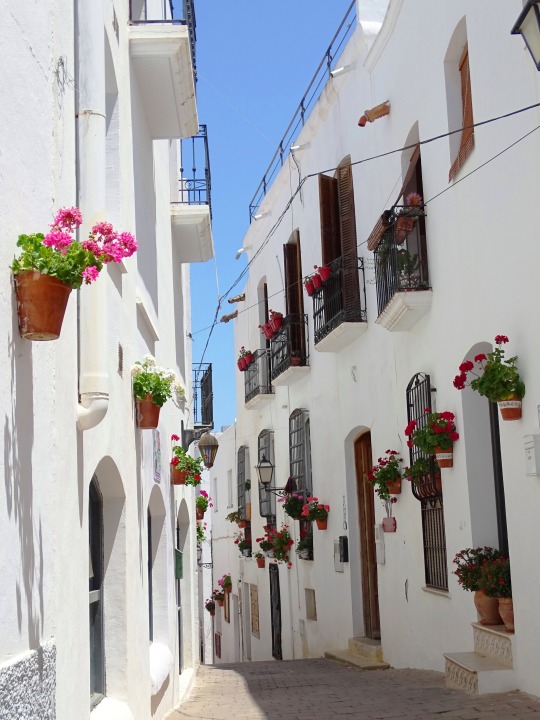







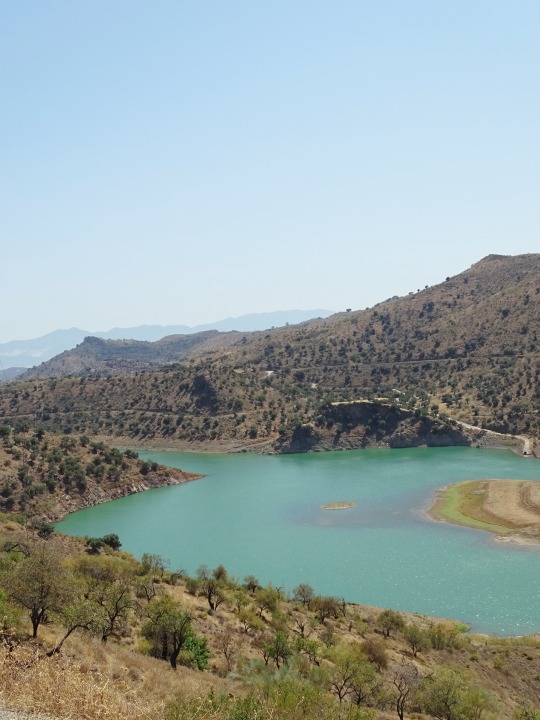
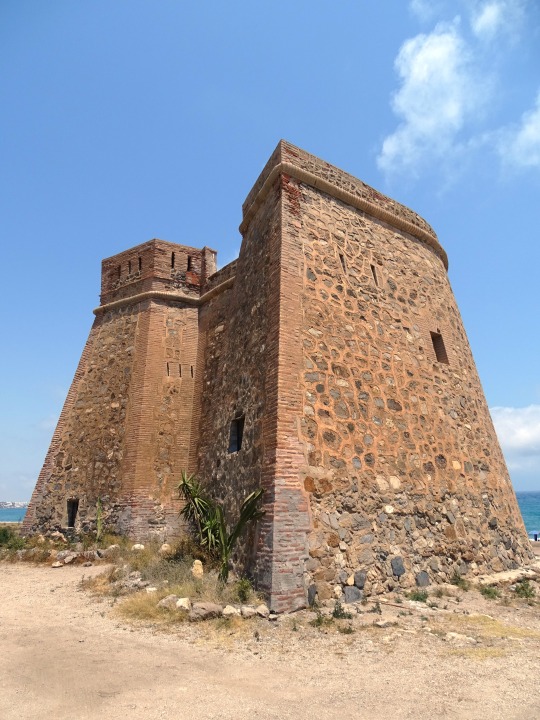
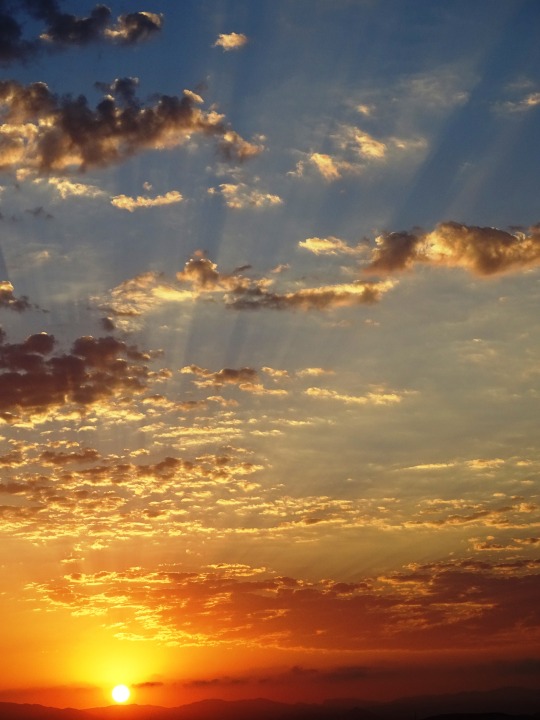
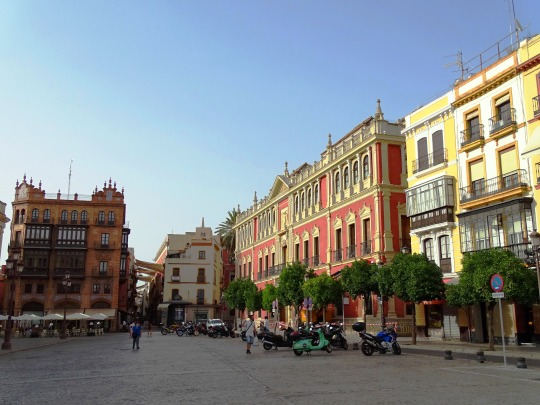



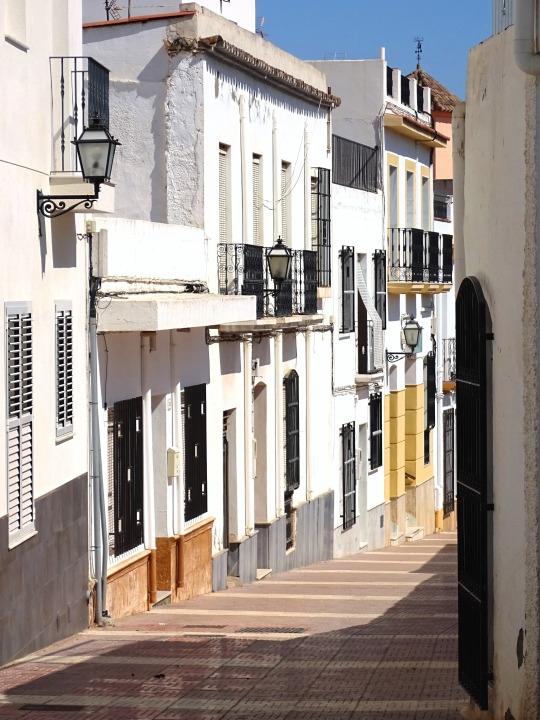


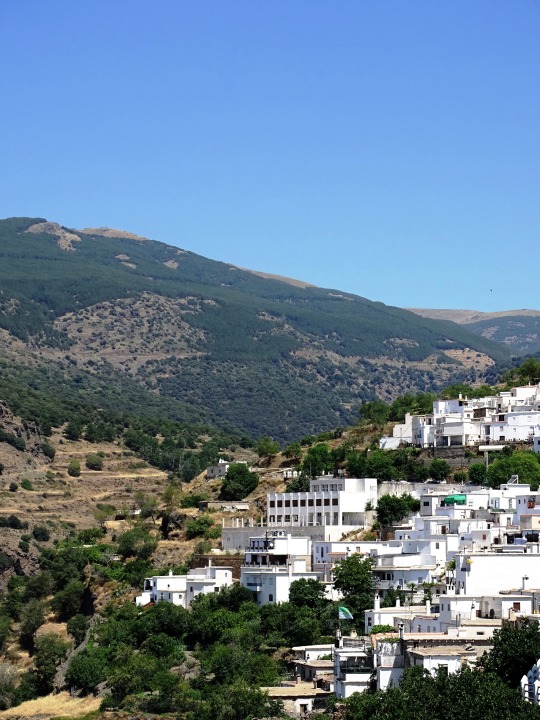
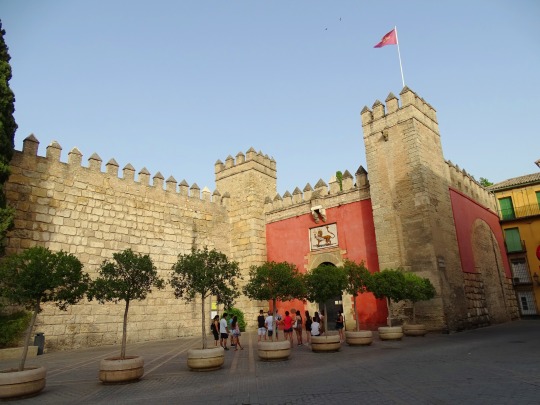
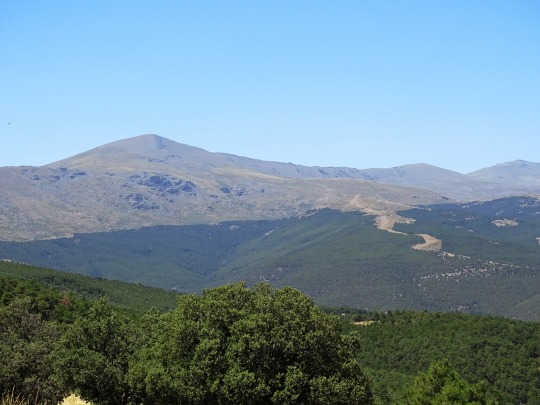



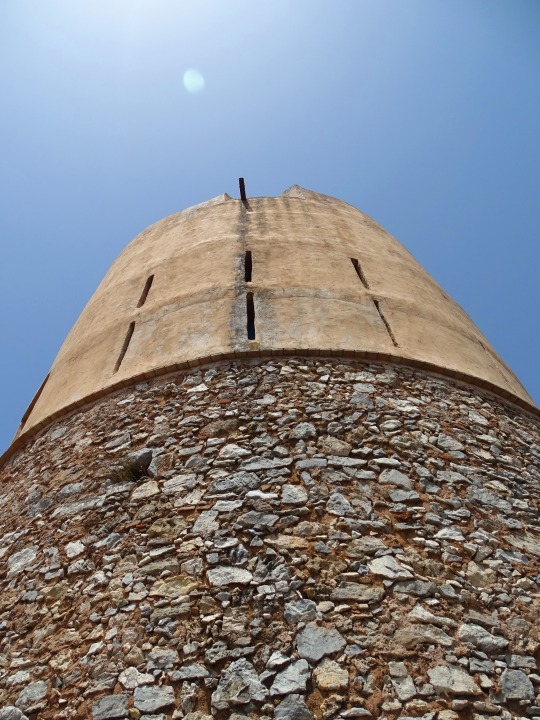

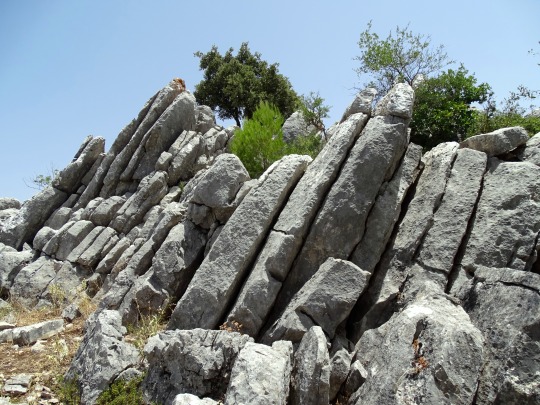

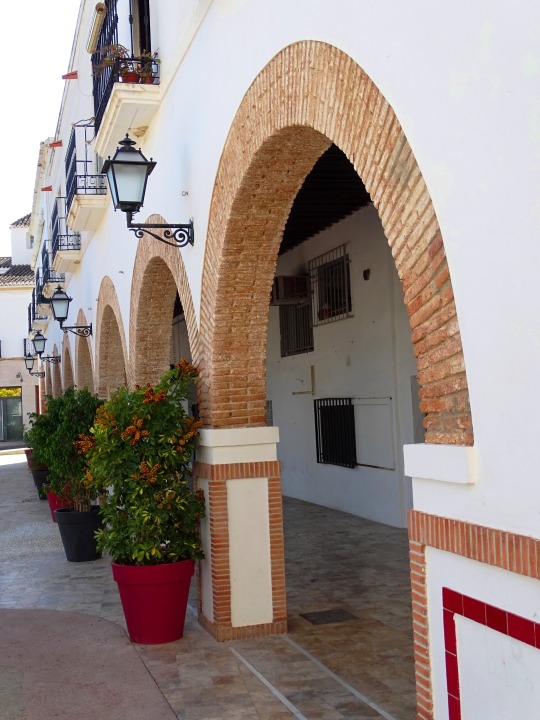
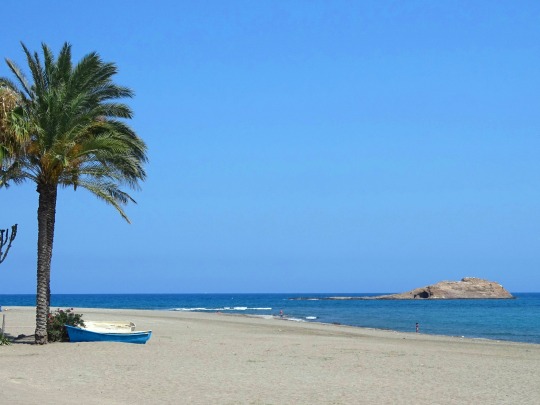
Andalusia Day
Andalusia Day or ‘Dia de Andalucia,’ is celebrated every year on February 28 in Spain. Andalusia is located in the southernmost region of the country and on this day in 1980, the people of the region voted to make it an autonomous community in Spain. The word ‘autonomous’ implies the power of a community or territory to self-govern and make its own decisions without outside interference. Although a few nationalist groups prefer to celebrate on December 4, February 28 is the officially recognized date for Andalusia Day.
History of Andalusia Day
On February 28, 1980, the people of Andalusia organized and held a referendum, titled the ‘Statute of Autonomy of Andalusia referendum.’ The purpose of the vote was to decide on the independence of the Andalusian community. The referendum was successfully passed and from that day, Andalusia became autonomous.
However, a few nationalist groups choose to celebrate Andalusia Day on December 4, a date which marks the demonstrations to demand independence that took place in 1977. Andalusia Day is celebrated as a community public holiday where businesses may close to participate in the festivities. It is, however, only celebrated in Andalusia and not the rest of Spain.
Some schools may also close for a week to participate in a ‘Semana Cultural’ or ‘Semana Blanca’, which means a cultural week or white week respectively. Schools also celebrate the Friday before Andalusia Day with a traditional Andalusian breakfast of sliced toast drizzled in olive oil and a cup of orange juice. Students also color in pictures of the symbols of Andalusia.
Andalusia Day is usually observed by families in intimate gatherings, although festivals and other social activities also mark the day. The people of Andalusia usually decorate their buildings with the national flag, as well as green and white bunting.
Andalusia is located in Southwestern Europe, south of the Iberian Peninsula. It is largely an agricultural community, though, in recent times, it has seen exponential growth in industrialization. Andalusia has eight parts to it, Almeria, Cádiz, Córdoba, Granada, Huelva, Jaén, Málaga and the capital city of the community, Seville.
Andalusia Day timeline
1918 Flag of Andalusia
The flag of Andalusia is designed by Blas Infante, a writer, historian, and politician also referred to as the father of Andalusian nationalism.
1977 Demonstrations for Independence
A public protest takes place to demand Andalusian autonomy.
1980 The Statute of Autonomy
The ‘Statute of Autonomy of Andalusia’ referendum is passed into law.
2007 Parliament of Andalusia Awards
The Parliament of Andalusia grants the Medal of Andalusia to Miguel Báez Espuny and honors José de Sousa Saramago, with the title, ‘the Favorite Son of Andalusia.’
Andalusia Day FAQs
Does Andalusia have a president?
Yes. The current president of Andalusia is Juan Manuel Moreno Bonilla.
What language is spoken in Andalusia?
Spanish is the official language, although you will find different dialects depending on the region.
Is Andalusia a small community?
Andalusia is home to over eight million people so, a relatively large population considering its size, a little over 87,000 kilometers square.
How to Observe Andalusia Day
Spend time with friends and family
Celebrate with color
Use the hashtag
For all the wonderful Andalusian people, celebrate this special day by taking the time to spend with friends and family. Also take a moment to reflect on what being part of a community means to you.
Decorate your home, office, or place of business with colors representing Andalusia. The colors of their national flag are dark green and white.
Spread the sense of pride in the community on Andalusia Day by using the hashtag #andalusiaday on all your social media platforms. Start an online conversation.
5 Fun Facts About Andalusia
Largest population
Land of the vandals
Caves of Nerja
Christopher Columbus
Andalusia’s hinterland
Andalusia is one of the autonomous communities in Spain with the largest population.
Andalusia means ‘land of the vandals.,’ and refers to a German tribe that settled there in the third and fourth centuries and were considered destroyers.
In Andalusia’s Caves of Nerja, the earliest-known artwork in human history was found.
It was from Andalusia that Christopher Columbus embarked on his famous journey of discovering America.
Andalusia’s hinterland is the hottest region of Europe.
Why Andalusia Day is Important
It’s a declaration of independence
It’s an opportunity to have fun
It reminds us of the value of community
The day is a joyful reminder of the fact that Andalusia is a self-governing community. It’s a celebration of the region’s history in achieving sovereignty.
Andalusia Day affords individuals the chance to partake in activities. Look out for community events such as cultural week or festivals that pay homage to this day.
Andalusia Day promotes a great sense of community among Andalusians. The shared history helps to break down barriers.
Source
#Andalusia Day#Dia de Andalucia#28 February#Sevilla#Seville Cathedral#summer 2021#original photography#Spain#España#cityscape#landscape#architecture#tourist attraction#Dalías#Alcazaba of Almería#Mojácar#Carboneras#Mediterranean Sea#Sierra de las Nieves National Park#Sierra Nevada#La Calahorra#Casasola Dam & Reservoir#Bayárcal#28 February 1980#anniversary#Spanish history#travel#vacation#landmark
3 notes
·
View notes
Text
Arturo "El negro" Durazo
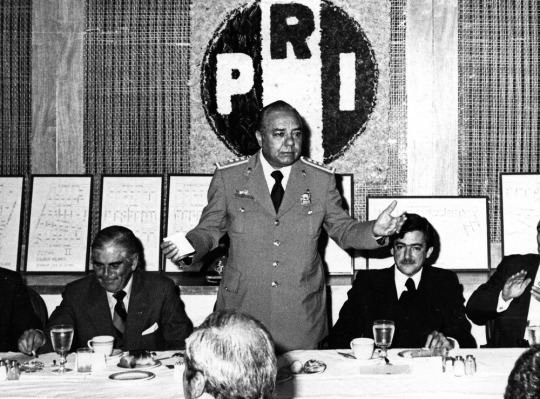
El Negro Durazo se crió en un hogar humilde, pero en su infancia conoció a José López Portillo y lo acompañó durante toda su carrera política. Cuando López Portillo se convirtió en presidente de México nombró a su compadre General de División, aunque Durazo nunca cursó la carrera militar. Como jefe de la Policía del DF, Durazo hizo desastres: corrompió a la fuerza, torturó estudiantes, ejecutó a delincuentes, pagó coimas a periodistas y medios de comunicación; formó una banda de ladrones de coches compuesta por los internos del penal de Santa Marta, organizó secuestros y robos a bancos; y participó del narcotráfico.
Pero eso no es todo, Durazo fue clave en el ascenso al estrellato de la carrera del cantante Luis Miguel, se lo señala como el responsable de la desaparición de la madre de El Sol, Marcela Basteri; también se construyó dos mansiones con dinero que salía del presupuesto anual de la policía del DF y hasta se jactaba de haberle "metido un palo de escoba por el ano" a Ernesto el Che Guevara y a Fidel Castro, mientras pergeñaban la revolución cubana en México.
Arturo Durazo Moreno nació en Cumpas, Sonora, en 1924 en el seno de una familia pobre que al poco tiempo partió rumbo a la Ciudad de México en la búsqueda de nuevas oportunidades. Durante su infancia y adolescencia, el Negro vivió en la Colonia Roma, donde conoció y entabló una amistad con José López Portillo, que cambiaría su vida por completo.
El Negro Durazo fue creciendo en la vida política de México a la sombra de López Portillo, que era respaldado por el Partido Revolucionario Institucional (PRI).
Arturo Durazo estudió en el Instituto Politécnico Nacional (IPN), ingresó a la función pública como trabajador del Banco de México (Banxico), luego fue inspector de tránsito e ingresó a la extinta Dirección Federal de Seguridad (DFS). Fue titular de la Comisión Federal de Electricidad (CFE) y luego secretario de Hacienda y Crédito Público en el mandato de Luis Echeverría Álvarez, otro exponente del PRI que seleccionó a José López Portillo como candidato presidencial, boleto seguro para llegar a Los Pinos, la residencia presidencial en México hasta 2018, cuando Andrés Manuel López Obrador decidió convertirla en un centro cultural abierta al público.
López Portillo nunca abandonó a su viejo amigo y nombró a Durazo Moreno como el jefe de seguridad de su campaña presidencial. La figura del Negro Durazo se dio a conocer públicamente en ese momento y empezó a crecer dentro de la vida política mexicana.
Durazo había creado un centro clandestino de detención y tortura en el hotel La Posada del Sol, uno de los edificios más enigmáticos de la zona centro de la capital. Allí secuestró y ejecutó a líderes de movimientos estudiantiles de finales de la década del 70.
“Sacaban a los chavos y les ponían unas cosas como pasamontañas, pero con pico, no sé, creo que hacían ritos satánicos”, declaró una vecina del lugar.
En tanto, entro otros negocios clandestinos que el Negro Durazo llevaba adelante en la Ciudad de México se encuentra el de "La Cuarta Compañía", un grupo de presos del penal de Santa Marta que por las noches salía a robar autos y bancos con la custodia de la policía.
Durazo incluso exigía una "coima" a los miembros de la fuerza que debían pagar por sus uniformes, armas, mantenimiento de los vehículos. Lo que convirtió a los agentes en delincuentes con placa: extorsionaban a los civiles, secuestraban, pedían sobornos. Todo para poder pagar el "entre", como se conocía a la tarifa impuesta por Durazo, para poder seguir perteneciendo a la fuerza.
Una anécdota que relata José Sánchez López, reportero que durante décadas colaboró en áreas de Comunicación Social de la policía capitalina y del gobierno federal, cuenta que un reportero de una radio encaró a Durazo por una serie de denuncias. Eñ jefe de policías le respondió: "¡A ver, cabroncito! cuál pinche corrupción, aquí no hay ni madres de corrupción, venga p’a acá". Durazo se llevó al periodista a una habitación repleta de sacos con cientos de sobres llenos de dinero, producto de botines recuperados por la Policía que no eran reportados. "¡Métale la mano, cabrón! y lo que agarre es suyo", le dijo. El reportero metió ambos brazos y cargó con lo que pudo.
"¡Ya vio, mi cabrón, que aquí no hay ni madres de corrupción!", afirmó sonriente el Negro Durazo. Así mantenía la imagen de la institución y el silencio de los medios de comunicación.
Las mansiones, las fiestas y Luis Miguel El Negro Durazo llegó a amasar una fortuna valuada en los 100 millones de dólares. Aunque nunca gastó ni un centavo "legal" en construir sus propiedades. Todo corría por cuenta del presupuesto de la Policía.
Así se hizo construir dos fastuosas mansiones en las afueras de Ciudad de México. Una de ellas, con sus caballerizas y su hipódromo privado, su polígono de tiro, su discoteca calcada punto por punto del Studio 54 de Nueva York, por un valor de 250.000 dólares.
La otra, llamada "El Partenón de Zihuatanejo" por estar edificada en un estilo inspirado en el de la Grecia clásica, el Negro no pagó ni un peso: los albañiles de la obra fueron los propios agentes de la Policía del Distrito Federal.
En esas mansiones, Durazo organizaba largas fiestas con litros de alcohol y mucha cocaína. Y un pequeño Luis Miguel de 11 años animaba a los invitados del jefe de Policía. El Negro Durazo fue clave en el ascenso a la fama de "El Sol de México". Luis Rey, el padre del artista, tenía una estrecha relación con Durazo, que recomendó a Luismi para que se presentara en la boda de Paulina López Portillo, una de las hijas del Presidente de la República. A cambio, el Negro Durazo habría pedido "favores sexuales" a la familia de Luisito Rey y se lo señala como el responsable de la desaparición de Marcela Basteri, la madre de Luis Miguel.
Era tal la impunidad del Negro Durazo que se jactaba de haber violado a Ernesto el Che Guevara y a Fidel Castro. Según el célebre libro "Lo negro del Negro Durazo", escrito por su ex escolta José González González, Durazo presumía de hbaer detenido a los revolucionarios mientras estuvieron en México: “Siempre se jactó de haber vejado a los dos personajes. Decía que les había metido un palo de escoba por el ano”, contó el autor del libro.
Al terminar el mandato de López Portillo, en 1982, Miguel de la Madrid Hurtado asumió como presidente de México, y Durazo fue uno de los apuntados por el nuevo régimen para enviar un mensaje en contra de la corrupción. El nuevo presidente buscó así poner distancia y aplicar el lema de su campaña, la ‘Renovación Moral’.
El Negro huyó del país rumbo a Brasil donde a pesar de ser buscado por Interpol no podían dar con su paradero ya que las relaciones bilaterales entre México y Brasil en ese momento eran casi nulas. Durazo esperaba recibir el perdón del nuevo presidente, que tenía prevista una visita al país sudamericano. Otra versión indica que Durazo en realidad buscaba en Brasil realizarse una cirugía estética para cambiar su apariencia.
El encuentro con Miguel de la Madrid nunca se produjo y Durazo cometió el error de abandonar Brasil. Dos años después fue detenido en Puerto Rico y extraditado a México para enfrentar cargos por contrabando, acopio de armas, evasión fiscal y abuso de autoridad.
Pasó ocho años en la cárcel, para después ser liberado en 1992 por buena conducta y por su delicado estado de salud a causa de un cáncer de colon. Vivió 8 años en libertad hasta el día de su muerte, el 5 de agosto de 2000, en Acapulco.
7 notes
·
View notes
Text
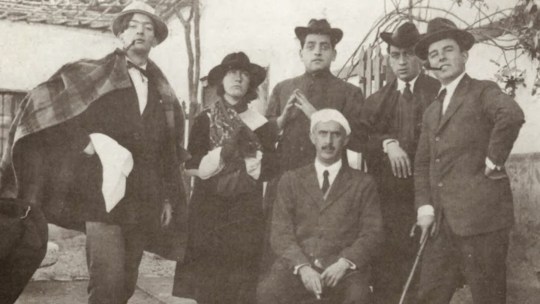
A century of the Order of thuggish and drunken knights: Lorca, Dalí and Buñuel partying in Toledo
Federico García Lorca was wrapped in a sheet stolen from the Posada de la Sangre – which disappeared in the Civil War and was the scene of Miguel de Cervantes's The Illustrious Mop –, drunk as a thief and with the desire to wander alone through the narrow streets of the old town of Toledo. Around him, some young hooligans laughed with the poet with noise and hubbub. This is how a Toledo man named Eduardo met the playwright from Granada during a Toledo night in the 1920s. At that moment, this kind man, seeing the panorama, tried to take Lorca to the relief house on Barco Street, but He flatly refused to accompany him. The poor man, of course, did not understand anything.
What this Toledoan, grandfather of the author of the space Toledo Olvidado, who is the one who told this anecdote, did not know is that Lorca was complying with one of the strict rules of the well-known Order of Toledo, a brotherhood of artists and writers related to the Generation of '27 and the Madrid Student Residence created by Luis Buñuel – calling himself Condestable – in the Venta de Aires de Toledo restaurant in March 1923.
This is how a century ago the streets of Toledo could not believe what was happening on its cobblestones. One hundred years since Buñuel, with his idea, managed to revolutionize the students of the Residence and the silent alleys of the old town of Toledo. Despite such famous components, the truth is that little or very little is known about this Order of Toledo. There is not much documentation available, beyond the stories of the protagonists themselves. Buñuel, the architect of this mischievous and intellectual action, dedicates an entire chapter to the Order in My Last Sigh, his autobiography written in his exile in Mexico.
A religious revelation and the smell of wine
«I am walking through the cloister of the cathedral, completely drunk, when, suddenly, I hear thousands of birds singing and something tells me that I must immediately enter the Carmelites, not to become a friar, but to steal the convent's treasury. The doorman opens the door for me and a friar comes. I tell him about my sudden and fervent desire to become a Carmelite. He, who has undoubtedly noticed the smell of wine, walks me to the door. The next day I made the decision to found the Order of Toledo," explains Buñuel in the aforementioned autobiography.
The rules of the Order of Toledo are strict and taken very seriously by its members. So much so that some of them even had a little problem or another in 1936, as the poet José Moreno Villa told us from Mexico, after the outbreak of the Spanish Civil War. "This order is a bit communist," thought some "men alien to letters and much more alien to irony"; although the truth is that there was only a hint of provocation in this crazy association. A normal thing among extravagant artists, somewhat dadaist, somewhat surrealist. «The starting point was to have fun, have a good time and get drunk. But it is true that, personally, I have always related what these young people did in Toledo with the historical avant-garde of the moment. I see it as the performances that the Dadaists did in Paris and Zurich, which were things that didn't make much sense, as Surrealism later adopted. In fact, it is worth noting that some members of this Order of Toledo were part of the Paris surrealist group, like Buñuel or Dalí himself,” explains Juan Carlos Pantoja, author of The Order of Toledo: imaginary avant-garde walks*.
Pantoja also details that, possibly, there were some precedents to Buñuel's Order of Toledo because "there was already a group of great intellectuals, among whom were Américo Castro, Alfonso Reyes, Antonio García Solalinde or Moreno Villa, who met in Toledo to walk at night and drink wine from 1917 onwards. He details that "they stayed in a rented house on Cárcel del Vicario street, in front of the Cathedral, and they became known as the gathering of El Ventanillo, due to the existence of a small window with views of the Valley. Buñuel says that he got to know Toledo accompanying Solalinde, so we can think that perhaps the Aragonese was at some point in these gatherings and that, from there, the idea of doing something similar arose. Pepín Bello – who left no work, but was a friend to everyone, as gallery owner Guillermo de Osma once commented –, Rafael Alberti, Dalí, María Teresa León and Federico García Lorca and his brother, among others, were part of the Brotherhood created by way improvised by Buñuel that had something of a "poetic act", according to the poet from Cádiz. And the students of the Residence were lovers of Toledo, according to Bello in an interview in 2000:« We took the train from Madrid to Toledo, we traveled in third class and it took us two hours to arrive. We went up from the station and went to drink in the taverns of Zocodover, which was very close to the Posada de la Sangre, to get into the mood a little »
Order of Toledo: drink wine and do not shower
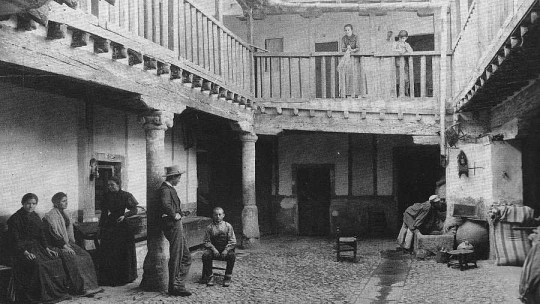
Courtyard of the Blood Inn
Among the rules of the Order of Toledo, and which Buñuel said with his Calanda crudeness, was that of not washing or showering "while the visit in this Holy City lasted." They had to go to Toledo once a year, watch over Cardinal Tavera's tomb, love Toledo above all and, of course, "wander, especially at night, through the wonderful and magical city of the Tagus," according to Alberti. "Those who preferred to go to bed early could not qualify for the rank of knight, little more than the title of squire," explains Buñuel in his autobiography. Furthermore, Pantoja details, "each of the members had to contribute ten pesetas to the common fund for accommodation and food and to go to Toledo as frequently as possible and put themselves in a position to live the most unforgettable experiences." Bello points out, recalling Toledo's adventures in an interview, that "we stayed at the Posada de la Sangre because we were students and it was difficult for us to sleep for just one peseta. Of course, it was a place of dubious cleanliness, where mainly muleteers stopped with their animals. The poet María Teresa León, in her book Memory of Melancholy, also remembered that this inn “had little rooms with just one bed. There, Rafael [Alberti], that night we didn't talk about El Greco, but we did talk about bedbugs. Toledo bedbugs! Toledoan night! I turned on the light. How well Rafael slept with his chest crossed by hundreds of little animals frantically searching for the hiding place of poetry!
Alberti precisely explains in The Lost Grove that "the brothers left the inn when the cathedral clock struck one, a time when all of Toledo seems to narrow, become even more complicated in its ghostly and silent labyrinth" and also relates in detail how He experienced firsthand his initiation into the Order of Toledo, with some fear at not knowing anything about the labyrinthine streets of Toledo.
«We went out into the street, carrying all the brothers, except me, hidden under the jacket, the sleeping sheets, taken out quietly. The poetic act was going to consist of bringing to life an entire theory of ghosts in the atrium and plaza of Santo Domingo el Real. After weaving and unweaving steps between the deep crevices of sleeping Toledo, we ended up at the convent at a moment when its defended windows lit up, filling them with veiled songs and monkish prayers. While the monotonous prayers went on, the brothers, who had left me alone at one end of the square, covered themselves with the sheets, seeming slow and distanced, white and real ghosts from another time. The suggestion and fear that I began to feel were increasing, when suddenly, the dressed visions appeared, shouting at me: 'This way, this way!', sinking into the narrow alleys, leaving me - one of the worst tests I have ever faced. the novices were subjected – abandoned, alone, lost in that frightening winding of Toledo, without knowing where I was and without the possibility of someone showing me the way to the inn, in addition to not finding a single passerby at that point in the night, in Toledo, if they don't inform someone every 30 meters, you can consider yourself lost definitively. At dawn I found the Posada de la Sangre, and I went to sleep, happy with my first adventure as an initiate into the mysteries of the Toledo order,” Alberti recalled years later. Food and comedy at Venta de Aires
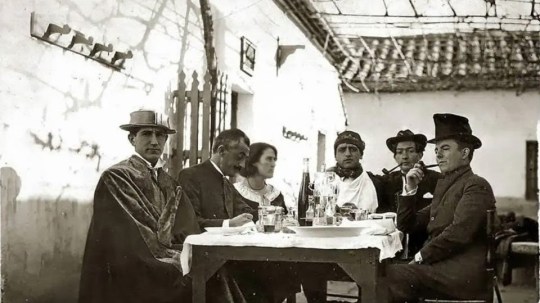
Members of the Order of Toledo, at the Venta de Aires
In Toledo, the members of this order ate, explains Buñuel, "almost always in taverns, such as Venta de Aires, on the outskirts, where we always ordered tortilla on horseback - with pork -, a partridge and white wine from Yepes." . There, in this sale, the friends performed for the first time Don Juan Tenorio, by José Zorrilla, dressed in improvised costumes, where we see that Buñuel is dressed as a parish priest, an irreverence with respect to the church and the double standards of its members that We will always see them reflected in their films. «With regard to this, this relationship between artists and religion, Max Aub told the anecdote that while walking through Toledo they found a Virgin in a niche on the street, it could be the one still located on Alfileritos Street, although it is not documented, that Dalí began to pray in a devout and tender manner, but suddenly began spitting at her angrily and insulting her. He went from one thing to another in an incomprehensible way, once again showing off his surrealist thinking," explains Pantoja.
Alberti says that also on the walls of the Venta de Aires, the brothers of the Order had left the mark of their art. «Under the arbor, the patio of our banquet, the main brothers were portrayed in pencil on the whitewash of the wall. Its author, Salvador Dalí, was also among them. Someone told the innkeepers not to whitewash them, that they were worthy works by a famous painter and that they were worth a lot of money. Despite the warning, years later they no longer existed. They had been erased by new owners of the sale," explains the poet. After eating, they returned to Zocodover, always on foot, making "an obligatory stop at the tomb of Cardinal Tavera, sculpted by Berruguete. A few minutes of contemplation in front of the recumbent statue of the cardinal, dead of alabaster, with pale and sunken cheeks, captured by the sculptor one or two hours before the putrefaction began," adds the filmmaker.
Fisticuffs with the cadets of the Military Academy
Upon returning to the old town, the Order even experienced some fights with the cadets of the Toledo Military Infantry Academy, after some of them rudely complimented María Teresa León, an anecdote that she herself tells. «At I don't know what time, just when we were visiting some taverns to balance with so much church, we came face to face with a group of uniformed boys, who turned to me and said: 'Blonde, I would eat you with suit and with everything'. Buñuel rolled up the sleeves of his shirt and when he saw him advance, the boys ran out so as not to commit themselves to Aragon, a region where the insults are harsher. They caught up with them and, after several punches, the cadets were defeated. A neighbor handed us a jug: 'Drink, drink. These cadets always making a fuss!' Meanwhile, she licked her lips with pleasure because the civilians had beaten the military, those boys are always on the hunt for Toledoan girls," León said.

Rafael Alberti and María Teresa León, poets of the Generation of '27 and members of the Order of Toledo
A confrontation with the military that Buñuel also remembers, although in a somewhat less refined way than the poet. The film director explains in his memoirs. «The cadets were really scary. One day we came across two of them and grabbing María Teresa, Alberti's wife, by the arm, they told her: 'How horny you are.' She protests, offended, I go to her defense and knock down the cadets with my fists. Pierre Unik comes to my aid and kicks one of them. There were seven of us and the two of them, we did not boast. We leave and two civil guards who had seen the fight from afar approach, instead of reprimanding us, they advise us to leave Toledo as soon as possible, to avoid the revenge of the cadets. We don't pay attention to them, and for once, nothing happens».
The Order of Toledo in Tristana
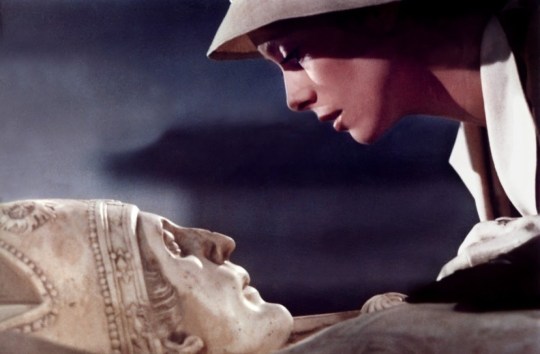
This entire Order of Toledo is reflected in Tristana, the film that Buñuel would shoot here in Toledo. Pantoja defends that "he winked at his youthful adventures, with Catherine Deneuve wandering the streets and visiting Cardinal Tavera, and bringing his face closer to him, which is one of the great images of the film." «That Order of Toledo laughed at everything, nothing was taken too seriously. They laughed at art, like the futurists did, who advocated burning museums and libraries, and they did everything, in addition, in a groundbreaking way. Their lives, without a doubt, were pure avant-garde," concludes Pantoja.
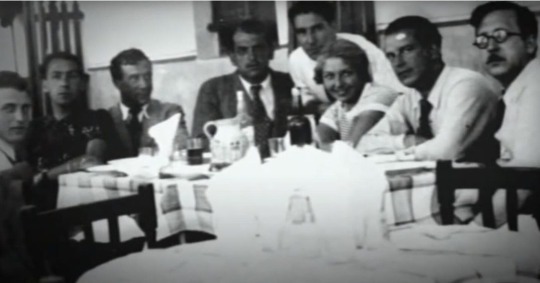
* I have scans of this book, I am planning to publish them here on Tumblr on a series of posts
#la orden de toledo#caballeros de la orden de toledo#knights of the order of toledo#federico garcía lorca#luis buñuel#salvador dalí#order of toledo#maría teresa león#rafael alberti#pepín bello#josé moreno villa
2 notes
·
View notes
Text
¿Es hora de que el papa anule el infierno?

Buenos Aires, 24 de diciembre de 1997
Juan Pablo II
Ciudad del Vaticano
De nuestra consideración:
Se acerca el fin del milenio. Se acerca, posiblemente, el Apocalipsis y el Juicio Final. Si es cierto que son pocos los que se salvan, como advierte el Evangelio, se acerca para la mayor parte de la humanidad el comienzo de un infierno inacabable. Para evitarlo basta volver a la justicia que Dios Padre dictó en el Génesis. Si Él castigó la desobediencia de Eva suprimiendo nuestra inmortalidad, no es justo que el Hijo nos la haya restituido, tantos siglos después, prolongando padecimientos. Si una parte de la Trinidad dicta una sentencia cuya pena termina y se completa con la muerte, no puede otra parte abrir cada causa, agregar otra sentencia, resucitar el cadáver y aplicar un castigo adicional que repite infinitas veces el castigo ya cumplido por el pecador una vez muerto. La justicia del Hijo contradice y viola la del Padre. La existencia del Paraíso no justifica la del Infierno: la bondad de los pocos salvados no les permitirá ser felices sabiendo eternamente que novias o hermanas o madres o amigos y también desconocidos y enemigos (prójimo que Jesús nos ordena amar y perdonar) sufren en tierras de Satanás. Le solicitamos, entonces, volver al Pentateuco y tramitar la anulación del Juicio Final y de la inmortalidad.
Lo saludamos atentamente.
CIHABAPAI
(Club de impíos herejes apóstatas blasfemos ateos paganos agnósticos e infieles, en formación)
Adhieren a esta iniciativa Daniel Acosta, Rodolfo Agüero, María Inés Aldaburu, Alberto Alonso, María Álvarez, Irma Amato, Roberto Amigo Cerisola, Osvaldo Baigorria, Elba Bairon, Oscar Balducci, Carmen Baliero, Irene Banchero, Jorge Barneau, Ricardo Bartís, Florencia Battiti, Fernando Bedoya, Alfredo Benavidez Bedoya, Miguel Ángel Bengochea, Alicia Benítez, Carlos Boccardo, Nestor Boher, Oscar Bony, Juliano Borobio Matos, Mirta Botta, Marcelo Boullosa, Michèle G. Briante, Fernando Broussalis, Anahí Cáceres, Luis Camnitzer, Viviana Canet, Juan C. Capurro, David Carbó, Adrián Carreira, Álvaro Castagnino, Aníbal Cedrón, Marcelo Céspedes, Gustavo Charif, Diana Chorne, Emilia Chouhy de Finger, Diego Ciardullo, Gabriel Correa, María Mercedes Covas, Adolfo Coronato, Salvador Costanzo, Florencia Crescimbeni, Carmen D’Elía, Deni De Biaggi, Patricia Delmar, Mirta Dermisache, Santiago Deymonnaz, Marta Dillon, Juan Carlos Distéfano, Juan Doffo, Diana Dowek, Andrés Duprat, Gaba Echeverría, Beba Eguía, Emei, Lucas Engel, Gabriela Esquivada, Omar Estela, Roberto Fabbiani, Fernando Fazzolari, Alejandra Fenochio, León Ferrari, Mónica Filgueiras, Gloria Filipuzzi, Federico Finger, Julio Flores, Elsa Flores Ballesteros, Hernán Jaime Fontanet, Ana Foos, Jean Franco, Luis Freisztav, Roxana Fuertes, Pedro Gaeta, Griselda Gambaro, Nora García, Fernando García Delgado, Cristián Gay, Silvia Gay, Juan Gelman, Marisa Giménez, Mónica Girón, Andrea Giunta, Omar Glezer, Daniel Glüzmann, Ana Godel, Carmen Guarini, Miguel Harte, Joos Heintz, Juan Herrera, María José Herrera, Alicia Herrero, Eduardo Iglesias Brickles, Alejandro Inchaurregui, Graciela Jacob, Álvaro Jiménez, Magdalena Jitrik, Javier Maldonado, Pablo Marchetti, Silvina Martínez, Noé Jitrik, Kenneth Kemble, Guillermo Kexel, Laura Klein, Raquel Kogan, Patricia Kolesnikov, Patricia Korenblit, Diego Korman, Martín Kovensky, Mara La Madrid, Ramiro Larraín, Sergio Langer, Juan Lepes, Gabriel Levinas, Federico Lezcano (Bode), Ricardo Longhini, Ana López, Javier Maldonado, Ernesto Mallo, Laura Malosetti, Norberto José Martínez, José Luis Meirás, Nora Menghi, Leonardo Moledo, Tununa Mercado, María Moreno, Ester Nazarian, Adolfo Nigro, Luis Niveiro, Luis Felipe Noé, Fernando Noy, José Nun, Alejandro Oliva, Norberto Onofrio, Daniel Ontiveros, Enrique Oteiza, Clemente Padim, Pablo Páez, Margarita Paksa, Marcelo Paredes, Gerardo Patiño, Alan Pauls, Hilda Paz, Carlos Peralta, Margarita Perata, Pérez Celis, Ricardo Piglia, Alejandro Puente, Augusto Reinhold, Rep, Juan Carlos Romero, León Rozitchner, Horacio Rueda, Alfredo Saavedra, Corinne Sacca-Abadi, Guillermo Saccomanno, Tulio Sagastizábal, Carlos Ángel Sánchez, Viviana Sasso, Cristina Schiavi, Daniel Schiavi, Julia Schneider, Marcia Schvartz, Oscar Serra, Diego Sigalevich (Catón), Gabriela Siracusano, Rosa Skifik, Oscar Smoje, Elsa Soibelman, Sometidos por Morgan, Pablo Suárez, Asunción Suárez, Enrique Symns, María Inés Tapia Vera, Osvaldo Tcherkaski, Cristina Terzaghi, Alejandro Vainstein, Miguel Vayo, Ileana Vegezzi, Beatriz Velázquez, Daniel Veronese, Olga Viglieca, Jorge Villarroel, Luciana Volco, Teresa Volco, Yacaré Cumbiao-Litoral Poético, Alicia Zárate, Horacio Zabala, Beatriz Zardain, Luis Ziembrowski, Vicente Zito Lema, Lucía Marck-Meister, siguen las firmas

this is cute but also i like to think the pope has to preface every single statement with "this isn't dogma but" like he has to break character for a sec and clarify that he's not speaking ex cathedra
64K notes
·
View notes
Text
"Rostros Compartidos" una exposición sobre la mujer profesional y trabajadora arranca en la Universidad de Córdoba.
"Rostros Compartidos", una exposición sobre la mujer profesional y trabajadora, arranca en la Universidad de Córdoba. https://ift.tt/pXIVTBr 25 mujeres de España, de Córdoba, y 25 mujeres de India, principalmente Calcuta, en paralelo, posan en sus trabajos para compartir sus miradas con el espectador 6 fotógrafas y fotógrafos cordobeses y 3 indios, son los responsables de esta exposición. El Patio de Arte de la Facultad de Filosofía y Letras ha sido el lugar elegido por la organización del I Encuentro Cultural España India para mostrar al pueblo cordobés, y al incalculable número de visitantes que diariamente tiene este espacio. La exposición que cuenta con 50 fotografías, de 50 mujeres, la mitad de cada uno de los países ha sido realizada por emblemáticos fotógrafos de cada uno de los países. Por España han participado en este proyecto: A. Calderón, Azahara Yust, Juan Gaitan, Rafael Patiño, Rosa Pozo y. S. González. Por la India: Enakshi Banerjee, Debosmita Bhattacharya y Dibyashankar Mukhopadhyay. Estos 6 fotógrafos y fotógrafas han recogido a través de las lentes de sus cámaras la esencia de estas mujeres en su espacios y momentos laborales. Ellas miran al visitante mientras éste, ésta, las observan. Han sido fotografiadas en sus momentos laborales y ellas, aparecen, está presentes con sus ropas, indumentarias, habituales de trabajo. Estas mujeres han luchado y trabajado para estar en la posición que ahora están. Durante su trabajo ellas nos han hablado, disfrutando, del trabajo que realizan, de su profesión. La variedad que podemos ver es amplia, desde camareras de piso a abogadas, desde arquitectas a deportistas. 25 profesiones, 25 mujeres, posiblemente 25 mundos distintos. Pero todas felices, o aparentemente así es. Han dado el pistoletazo de salida de esta exposición, que estará presente hasta el 10 de diciembre en el patio de arte: Ricardo Córdoba de la Llave, Decano de la Facultad de Filosofía y Letras de la Universidad de Córdoba; María Piña, Presidenta de la Asociación Mujer y Poder; Auxiliadora Moreno Rueda, Diputada de Igualdad, Cooperación al Desarrollo, Consumo, Participación Ciudadana de la Diputación de Córdoba; Fernando Lara de Vicente, Director de Cultura de la Universidad de Córdoba; José Manuel Rosario Luna, CEO de Punto de Referencia; Silvia Medina Directora de Igualdad de la Universidad de Córdoba; y la delegación india de personalidades de la cultura. Para completar esta exposición se ha realizado un breve recorrido por la exposición en el siguiente video: Así también se puede disfrutar de un catálogo para descarga en https://blancosobrenegro.es/eventos/catalogo-exposicion-rostros-compartidos-del-18-noviembre-al-10-de-diciembre Y otro digital para ver en la web, móviles y tablets https://online.fliphtml5.com/pygmc/snjf/#p=1 Fotografías: Miguel Castillejo via Espacio https://ift.tt/6GXiqyz November 22, 2024 at 09:34AM
0 notes
Text
2024 olympics Spain roster
Archery
Pablo Acha (Burgos)
Èlia Canales (Tarragona)
Athletics
Julio Arenas (Madrid)
David García (Alcorcón)
Ibrahim Chakir (Seville)
Yago Rojo (Madrid)
Mohamed Attaoui (Torrelavega)
Adrián Ben (Viveiro)
Elvin Canales (Girona)
Ignacio Fontes (Ciudad Granada)
Mario García (Villar De Gallimazo)
Adel Mechaal (Palamós)
Thierry Ndikumwenayo (Castellón De La Plana)
Abdessamad Oukhelfen (Reus)
Enrique Llopis (Gandia)
Asier Martínez (Zizur Mayor)
Daniel Arce (Burgos)
Iñaki Cañal (Gijón)
Óscar Husillos (Palencia)
Tariku Novales (Santiago De Compostela)
Diego García (Madrid)
Álvaro Martín (Llerena)
Paul McGrath (Barcelona)
Miguel López (Murcia)
Jordan Díaz (Guadalajara)
Jorge Ureña (Onil)
Ester Navarrete (Vigo)
Dr. Meritxell Soler (Barcelona)
Cristina Montesinos (Terrassa)
Jaël Bestué (Barcelona)
Lorea Ibarzabal (Madrid)
Lorena Martín (Ciudad Salamanca)
Esther Guerrero (Banyoles)
Águeda Marqués (Segovia)
Marta Pérez (Soria)
Marta García (Ciudad León)
Carolina Robles (Dos Hermanas)
Irene Sánchez-Escribano (Ciudad Toledo)
Sonia Molina-Prado (Manzanares)
María Pérez (Seville)
Paula Sevilla-López (La Solana)
Carmen Avilés (Madrid)
Blanca Hervás (Madrid)
Eva Santidrián (Burgos)
Berta Segura (Lleida)
Majida Maayouf (Bilbao)
Laura García-Caro (Lepe)
María Pérez (Valencia)
Fátima Diame (Valencia)
Tessy Ebosele (San Sebastián)
Ana Compaoré (Guadalajara)
María Toimil (Mugardos)
Yulenmis Aguilar (A Coruña)
Badminton
Pablo Abián (Calatayud)
Carolina Marín (Huelva)
Basketball
Lorenzo Brown (Roswell, Georgia)
Jaime Pradilla (Zaragoza)
Rodolfo Fernández (Palma)
Xabier López-Arostegui (Getxo)
Santi Aldama; Jr. (Las Palmas De Gran Canaria)
Darío Brizuela (San Sebastián)
Alberto Díaz (Ciudad Málaga)
Juan Hernangómez (Madrid)
Guillermo Hernangómez (Madrid)
Destiny Garuba (Azuqueca De Henares)
Alejandro Abrines (Palma)
Sergio Llull (Maó)
Mariona Ortiz (Calella)
Laura Gil (Murcia)
Alba Torrens (Binissalem)
María Pérez (Vigo)
Queralt Casas (Girona)
Leticia Romero (Agüimes)
Leonor Rodríguez (Las Palmas De Gran Canaria)
María Cazorla (Las Palmas De Gran Canaria)
Andrea Vilaró (Barcelona)
Megan Gustafson (Port Wing, Wisconsin)
Paula Ginzo (Santoña)
María Conde (Barcelona)
Gracia Alonso-De Armiño (Bilbao)
Juana Camilión (Mallorca)
Vega Gimeno (Valencia)
Sandra Yguaravide (Valencia)
Boxing
Oier Ibarreche (Galdácano)
Rafael Lozano; Jr. (Ciudad Córdoba)
José Quiles (Elda)
Enmanuel Reyes (A Coruña)
Ayoub Ghadfa (Marbella)
Laura Fuertes (Asturias)
Canoeing
Pablo Crespo (Madrid)
Adrián Del Río (Madrid)
Miquel Travé (La Seu d'Urgell)
Pau Echaniz (San Sebastián)
Manuel Ochoa (Tomiño)
Diego Domínguez (Madrid)
Joan Moreno (Pollença)
Francisco Cubelos (Talavera De La Rena)
Carlos Arévalo (Betanzos)
Rodrigo Germade (Cangas)
Marcus Cooper (Mallorca)
Saúl Craviotto (Lleida)
Estefanía Fernández (Mérida)
Begoña Lazkano (Pontevedra)
Carolina García (Pontevedra)
Sara Ouzande (Gijón)
Miren Lazkano (San Sebastián)
Maialen Chourraut (Lasart-Oria)
María Corbera (Madrid)
Antía Jácome (Pontevedra)
María Portela (Cangas)
Climbing
Alberto Ginés (Ciudad Cáceres)
Leslie Romero (Sant Cugat Del Vallès)
Cycling
Alex Aranburu (Ezkio-Itsaso)
Juan Ayuso (Barcelona)
Oier Lazkano (Vitoria-Gasteiz)
Albert Torres (Ciudatella De Menorca)
Sebastián Mora (Villarreal)
Jofre Cullell (Santa Coloma De Farners)
David Serrano (Baza)
Mireia Benito (Beix Penedès)
Margarita García (Marratxí)
Diving
Adrián Abadía (Mallorca)
Nicolás García (Las Palmas De Gran Canaria)
Valeria Antonilo (Madrid)
Ana Carvajal (Villeneuva De La Cañada)
Equestrian
Borja Carrascosa (Madrid)
Claudio Castilla (Jerez De La Frontera)
Juan Jiménez (Castro Del Río)
Esteban Benítez (Cádiz)
Carlos Díaz (Cádiz)
Eduardo Álvarez (Madrid)
Sergio Álvarez (Avilés)
Ismael García (Las Palmas De Gran Canaria)
Fencing
Carlos Llavador (Madrid)
Lucía Martín-Portugués (Villeneuva De La Cañada)
Field hockey
Marc Vizcaino (Terrassa)
Borja Lacalle (Madrid)
Bruno Font (Madrid)
Alejandro Alonso (Santander)
Jordi Bonastre (Terrassa)
Xavier Gispert (Madrid)
Rafael Vilallonga (Madrid)
Pepe Cunill (Terrassa)
Álvaro Iglesias (Madrid)
José Basterra (Getxo)
Gerard Clapés (Eindhoven, The Netherlands)
Marc Reyné (Barcelona)
Marc Miralles (Bloemendaal, The Netherlands)
Luis Calzado (Barcelona)
Marc Recasens (Barcelona)
Joaquín Menini (Madrid)
Eduard De Ignacio-Simó (Madrid)
Ignacio Rodríguez (Santander)
Laura Barrios (Madrid)
Sara Barrios (Madrid)
Júlia Strappato (Matadepera)
Lucía Jiménez (Madrid)
María López (Gijón)
Belén Iglesias (Madrid)
Marta Segú (Madrid)
Constanza Amundson (Madrid)
Blanca Pérez (Madrid)
Lola Riera (Valencia)
Begoña García (Zaragoza)
Xantal Giné (Barcelona)
Beatriz Pérez (Santander)
Alejandra Torres-Quevedo (Madrid)
Clara Pérez (Madrid)
Patricia Álvarez (Santander)
Golf
David Puig (La Garriga)
Jon Rahm (Scottsdale, Arizona)
Azahara Muñoz (Málaga)
Carlota Ciganda (Pamplona)
Gymnastics
Néstor Abad (Madrid)
Thierno Diallo (Madrid)
Nicolau Mir (Palma)
Joel Plata (Madrid)
Miguel Zapata (Madrid)
David Vega (Barcelona)
Laura Casabuena (Alcoy)
Ana Pérez (Madrid)
Alba Petisco (Villarinos De Los Aires)
Alba Bautista (Teruel)
Polina Berezina (Alicante)
Ana Arnau (Madrid)
Inés Bergua (Huesca)
Mireia Martínez (La Pobla De Vallbona)
Patricia Pérez (Valencia)
Salma Solaun (Vitoria-Gasteiz)
Noemí Romero (Madrid)
Handball
Gonzalo Pérez-De Vargas (Ciudad Toledo)
Jorge Maqueda (Ciudad Toledo)
Alex Dujshebaev (Santander)
Daniel Dujshebaev (Santander)
Rodrigo Corrales (Cangas)
Adrià Figueras (Barcelona)
Imanol Garciandia (Urretxu)
Abel Serdio (Avilés)
Agustín Casado (Carboneras)
Aleix Gómez (Sabadell)
Ian Tarrafeta (Sabadell)
Miguel Sánchez-Migallón (Ciudad Real)
Kauldi Odriozola (Zumaia)
Daniel Fernández (Sabadell)
Javier Rodríguez (Madrid)
Nicole Wiggins (Madrid)
Marta López (Ciudad Málaga)
Carmen Campos (Madrid)
Silvia Arderius (Madrid)
Maitane Etxeberria (Lezo)
Mercedes Castellanos (Ciudad Real)
Jennifer Gutiérrez (Elche)
Lara González (Santa Pola)
Paula Arcos (Petrer)
Lysa Tchaptchet (Cuenca De Pamplona)
Kaba Gassama (Granollers)
Alicia Fernández (Valdoviño)
María Prieto (Zamora)
Alexandrina Barbosa (Estella-Lizarra)
Mireya González (León)
Judo
David García (Madrid)
Salvador Cases (Alicante)
Francisco Garrigós (Móstoles)
Tristani Mosakhlishvili (Vigo)
Nikoloz Sheradishvili (Madrid)
Ariane Toro (Bilbao)
Laura Martínez (Madrid)
Cristina Cabaña (Mérida)
Ai Tsunoda (Lleida)
Pentathlon
Laura Heredia (Barcelona)
Rowing
Dennis Carracedo (Banyoles)
Rodrigo Conde (Moaña)
Aleix García (Girona)
Caetano Horta (Noia)
Jaime Canalejo (Ciudad Seville)
Javier García (Ciudad Seville)
Virginia Díaz (El Astillero)
Esther Briz (Zaragoza)
Aina Cid (Amposta)
Sailing
Ignacio Baltasar (Sa Ràpita)
Andrés Barrio (Arucas)
Joaquín Blanco; Jr. (Las Palmas De Gran Canaria)
Diego Botín-Sanz (Santander)
Florian Trittel (Barcelona)
Jordi Xammar (Barcelona)
Pilar Lamadrid (Ciudad Seville)
Ana Moncada (Barcelona)
Gisela Pulido (Premià De Mar)
Támara Echegoyen (Ourense)
Paula Barceló (Palma)
Nora Brugman (Barcelona)
Tara Pacheco (Arucas)
Shooting
Andrés García (Ciudad Cuenca)
Alberto Fernández (Madrid)
Fátima Gálvez (Baena)
Mar Molné (Madrid)
Skateboarding
Alain Kortabitarte (Madrid)
Danny León (Móstoles)
Natalia Muñoz (Madrid)
Daniela Terol (Barcelona)
Julia Benedetti (A Coruña)
Naia Laso (Bermeo)
Soccer
Arnau Tenas (Vic)
Marc Pubill (Terrassa)
Juan Miranda (Olivares)
Eric García (Martorell)
Pau Cubarsí (Bescanó)
Pablo Barrios (Madrid)
Diego López (Turón)
Beñat Turrientes (Beasain)
Abel Ruiz (Almussafes)
Alejandro Baena (Roquetas De Mar)
Fermín López (El Campillo)
Jon Pacheco (Elizondo)
Joan García (Sallent De Llobregat)
Aimar Oroz (Arazuri)
Miguel Gutiérrez (Madrid)
Adrián Bernabé (Barcelona)
Sergio Gómez (Badalona)
Sam Omorodion (Ciudad Seville)
Cristhian Mosquera (Alicante)
Juan Sánchez (Dos Hermanas)
Sergio Camello (Madrid)
Alejandro Iturbe (Madrid)
María Rodríguez (Las Palmas De Gran Canaria)
Ona Batlle (Vilassar De Mar)
Teresa Abelleira (Pontevedra)
Irene Paredes (Legazpi)
Oihane Hernández (Mungialda)
Aitana Bonmatí (Vilanova I La Geltrú)
Athenea Del Castillo (Medio Cudeyo)
María Caldentey (Felanitx)
Salma Paralluelo (Zaragoza)
Jenni Hermoso (Madrid)
Alèxia Putellas (Mollet Del Vallès)
Pati Guijarro (Palma)
Cata Coll (Marratxí)
Laia Aleixandri (Santa Coloma De Gramenet)
Eva Navarro (Yecla)
Laia Codina (Campllong)
Lucía García (Aller)
Olga Carmona (Seville)
Vicky López (Madrid)
María Méndez (Oviedo)
Alba Redondo (Albacete)
Elene Lete (Zumarraga)
Surfing
Andy Criere (Hendaye, France)
Nadia Erostarbe (Zarautz)
Janire González (Zumaia)
Swimming
Carlos Garach (Granada)
Mario Mollà (Barcelona)
Arbidel González (Corvera De Asturias)
Luís Domínguez (Zaragoza)
Ferran Julià (Sabadell)
Carles Coll (Tarragona)
Sergio De Celis (Barcelona)
Hugo González (Palma)
César Castro (Plasencia)
Alisa Ozhogina (Ciudad Seville)
Iris Tió (Barcelona)
Txell Ferré (Barcelona)
Marina García (Sant Cugat Del Vallès)
Lilou Lluís (Madrid)
Meritxell Mas (Granollers)
Paula Ramírez (Barcelona)
Blanca Toledano (Madrid)
Ángela Martínez (Elche)
Ainhoa Campabadal (Barcelona)
María Daza (Madrid)
Alba Herrero (Sant Cugat Del Vallès)
Paula Juste (Lleida)
Carmen Weiler (Singapore)
África Zamorano (Barcelona)
Jessica Vall (Barcelona)
Laura Cabanes (Madrid)
Emma Carrasco (Lleida)
María De Valdés (Fuengirola)
Table tennis
Álvaro Robles (Huelva)
María Xiao (Madrid)
Taekwondo
Adrián Vicente (Madrid)
Javier Pérez (San Fernando De Henares)
Adriana Cerezo (Madrid)
Cecilia Castro (San Agustín Del Guadalix)
Tennis
Carlos Alcaraz; Jr. (Villena)
Pedro Martínez (Alzira)
Jaume Munar (Barcelona)
Rafael Nadal (Manacor)
Pablo Carreño (Barcelona)
Marcel Granollers (Barcelona)
Cristina Bucșa (Torrelavega)
Sara Sorribes (La Vall d'Uixó)
Triathlon
Alberto González (Ciudad Málaga)
Roberto Sánchez (Mislata)
Antonio Serrat (Vigo)
Miriam Casillas (Badajoz)
Anna Godoy (Barcelona)
Volleyball
Adrián Gavira (San Roque)
Pablo Herrera (Castellón De La Plana)
Daniela Álvarez (Gijón)
Tania Moreno (Madrid)
Lili Fernández (Alicante)
Paula Soria (Orihuela)
Water polo
Unai Aguirre (Barcelona)
Alberto Munárriz (Pamplona)
Álvaro Granados (Terrassa)
Bernat Sanahuja (Terrassa)
Miguel De Toro (Ciudad Seville)
Marc Larumbe (Barcelona)
Martin Faměra (Barcelona)
Sergi Cabanas (Barcelona)
Roger Tahull (Barcelona)
Felipe Perrone (Barcelona)
Unai Biel (Barcelona)
Alejandro Bustos (Madrid)
Eduardo Lorrio (Madrid)
Laura Ester (Barcelona)
Isabel Piralkova (Arenys De Mar)
Anni Espar (Barcelona)
Bea Ortiz (Terrassa)
Nona Pérez (Sant Cugat Del Vallès)
Paula Crespí (L'Hospitelet De Llobregat)
Elena Ruiz (Rubí)
María Peña (Madrid)
Judith Forca (Sabadell)
Paula Camus (Madrid)
María García (Sabadell)
Paula Leitón (Terrassa)
Martina Terré (Barcelona)
#Sports#National Teams#Spain#Celebrities#Races#Basketball#Georgia#Wisconsin#Fights#Boxing#Boats#Animals#Hockey#The Netherlands#Golf#Arizona#Soccer#France#Singapore#Tennis
0 notes